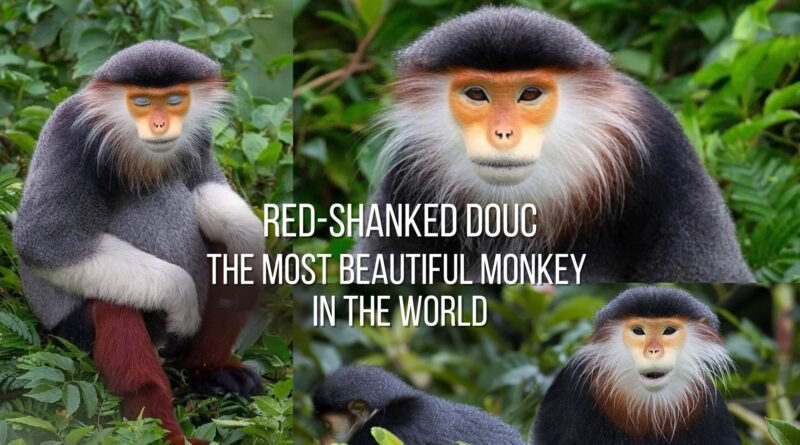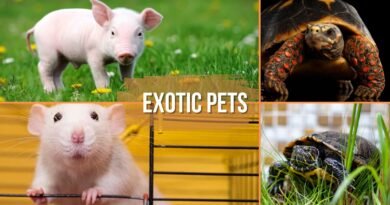Red-shanked Douc: the most beautiful monkey in the world
Their name is different: Red-shanked Douc, however, it is not just the name that differentiates them, but mainly how they look: they are one of nature’s most colorful animals in nature and considered the most beautiful monkey in the world. Let’s get to know a little more about this rare animal and its characteristics. Enjoy the reading!
What are some interesting facts about red-shanked douc?
The Red-shanked Douc is a creature steeped in fascination and wonder. Boasting a vibrant and unique color palette, this primate has captured the attention of wildlife enthusiasts and researchers worldwide. In this section, we will delve into a collection of intriguing facts about the Red-shanked Douc:
- At 10 months, the young develop their adult color, with dark hair appearing on their back.
- Unlike most monkeys, douc monkeys are social creatures.
- Their population ranges from four to 50 monkeys, with separate hierarchies for the two females and one male, where males dominate.
- Douc monkeys often give birth to twins and can have a few infants.
- These fascinating primates can live up to 25 years, both in captivity and in the wild.
Additional features of the red shanked doucs:
- They have a unique facial appearance with vibrant bright colors.
- Douc monkeys are arboreal, spending most of their time in trees.
- They are known for their acrobatic skills and agility.
- Their diet primarily consists of leaves, fruits, and flowers.
- Douc monkeys are considered an endangered species due to habitat loss and illegal hunting.
- They are native to Southeast Asia, specifically Vietnam, Laos, and Northeastern Cambodia, and arre critically endangered.
- Red-shanked doucs have a slow reproductive rate, making it difficult for their populations to recover from decline.
- Their body length can range from 55 to 75 cm.
Why are red-shanked doucs important?
Apart from being visually stunning creatures, red-shanked doucs play crucial roles in their ecosystems. As herbivores, they contribute
Why are red-shanked douc’s considered the most beautiful monkey in the world?
The striking coloration of the red-shanked douc is what sets them apart from other prim
Where do you find red-shanked douc langur?
The Red-shanked Douc, also known as Dove Langur, is found in only three countries in the world: Vietnam, Cambodia, and Southern Laos, being one of three species of Pygathrix. The other two are the Pygathix nigripes and Pygathix cinereus. The three species are endemic to Indochina.
Red shanked doucs live in primary and secondary in a forest habitat, ranging from lowland to mid-elevation mountainous areas. They can be found in both dry and moist habitats, preferring those with a dense canopy.
What is the red-shanked douc’s role in its ecosystem?
As any other animal species on our planet, the Red-shanked Douc plays a crucial role in maintaining balance in its ecosystem. As a herbivorous primate, they play an essential role in seed dispersal and plant pollination. They also provide food for predators such as tigers, leopards, and eagles. Their presence is vital to the health of their habitat.
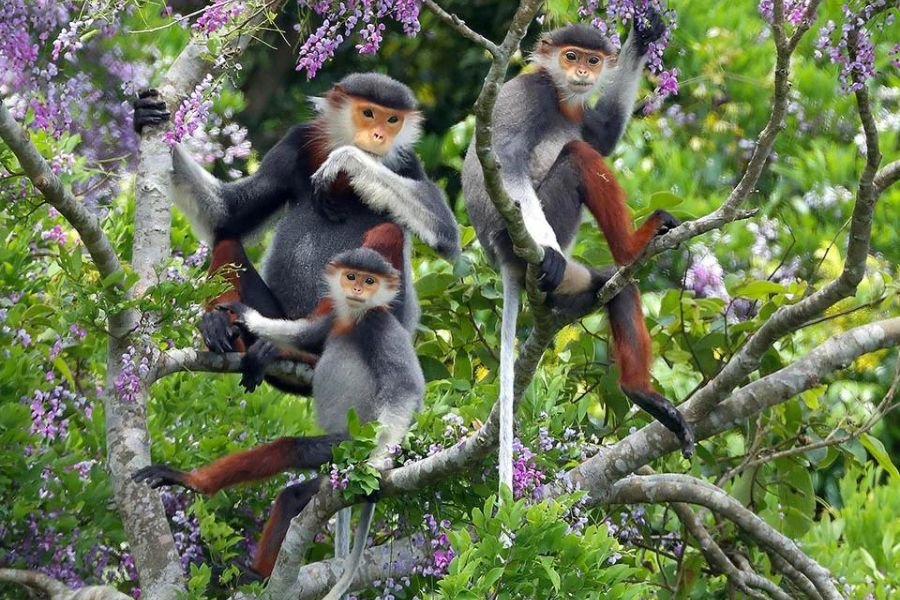
Image: Monaco Nature Encyclopedia
Red Shanked Doucs – Physical appearance
As the name implies, their deep red shanks are the most prominent characteristic of their distinctive and unique appearance, giving the impression that they are wearing red socks from the ankle to the knee, since the rest of the leg is black. This upper legs black color is cute, isn’t it?!
But that’s not all that gives this primate the title of the most beautiful monkey in the world. Its face which has a golden hue and the elongated white hair form, similar to white whiskers, a kind of picture frame that together with its black eyes complete the exotic touch of its beauty. If you look at their arms, does it look like they are wearing elbow-length gloves? This animal’s look is stunning.
The females of the species are slightly smaller than the males, reaching, as adults, a height of 20 to 30 inches and weight from 11 to 25 pounds. An interesting fact is that their tail is as long as the rest of their body.
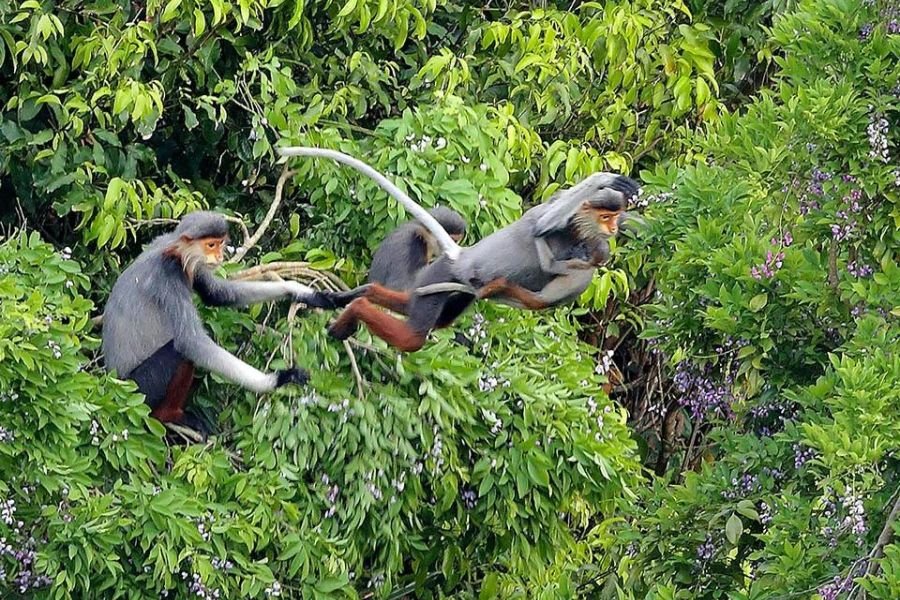
Image: Monaco Nature Encyclopedia
Red Shanked Doucs – Behavior
The red-shanked douc monkey is a predominantly arboreal animal, that is, it lives in trees and rarely goes to the ground, just to pick up fallen fruits or seeds. They are social animals, living in mixed groups of up to 50 individuals, where the order is patriarchal: the oldest male leads the group members, and the females are submissive and take care of the infants.
They are diurnal animals and do not usually move from the place where they live, doing so only when necessary due to lack of food. All movement is done through the trees, looking some a forest canopy journey, the older douc langurs adult males go in front and the females and infants in the middle, protected, while another line of males follows at the rear.

How does a Red Shanked Douc Langur communicate?
As social animals, they have a communication system by vocalization, which they use to ‘talk’ to each other and also the mothers with their infants. In addition to vocalization, they use facial expressions and grimaces to communicate and this plays a crucial role in group interaction. Through it, they show joy, anger, threat, intimidation, or submission. Sometimes, they seem to be just playing: opening their mouths and having their teeth exposed in a synchronized way. Another way to show when they are stressed is to hit tree branches with their hands.
 Image: Monaco Nature Encyclopedia
Image: Monaco Nature Encyclopedia
Red Shanked Douc Langur – Diet
Their diet is restricted to leaves, fruits, and flowers. The tender and young leaves are their favorite as it is easier for their stomach to digest. A curious fact about this primate’s diet is that more than 80% of it is based on leaves and that is exactly why they drink water in small quantities. They are very careful when selecting their food and reject overripe fruits and old or too tender leaves.
How do red-shanked doucs help grow plants?
Did you know the Red-shanked doucs help grow plants? Can you imagine how? It’s just that as they feed on top of the trees, they disperse the fruit seeds they eat and thus, new plants are born. Interesting, isn’t it? What at first might seem impolite (throwing leftover food on the ground) ends up becoming vital for the balance of the ecosystem.
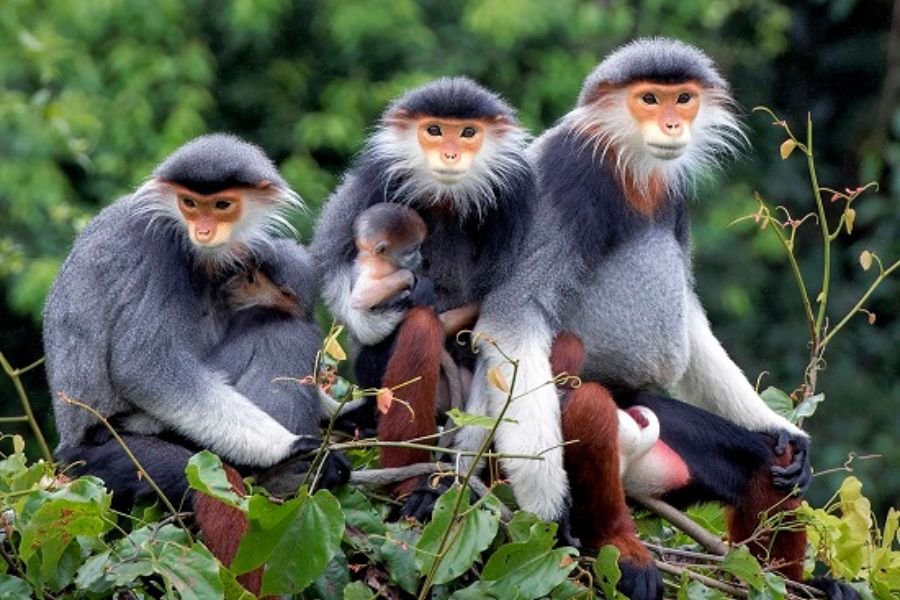
Image: DA NANG TODAY
Red Shanked Douc Langur – Breeding
Their group structure might be patriarchal, but when it comes to flirting, it is the female who does the job. They reach sexual maturity at 4 years old and the males at 5. When they are in the mating season, a little game of seduction takes place, in which the female lies down on the branches and stares at the male.

Image: Mundo Ecologia
How long is the gestation period for a red-shanked douc?
The red shanked doucs gestation period lasts around 120 days with only one infant at a time. The young one is born with the palest gray coat on the body, black snout, and yellowish bands under the eyes. As they grow, they acquire the common colors of adults.
The breeding usually takes place every two years. As in the absolute majority of species, including humans, it is the female responsible for caring for and feeding the infant, with occasional help from the rest of the group. The lifespan in captivity reaches 25 years, for both males and females.
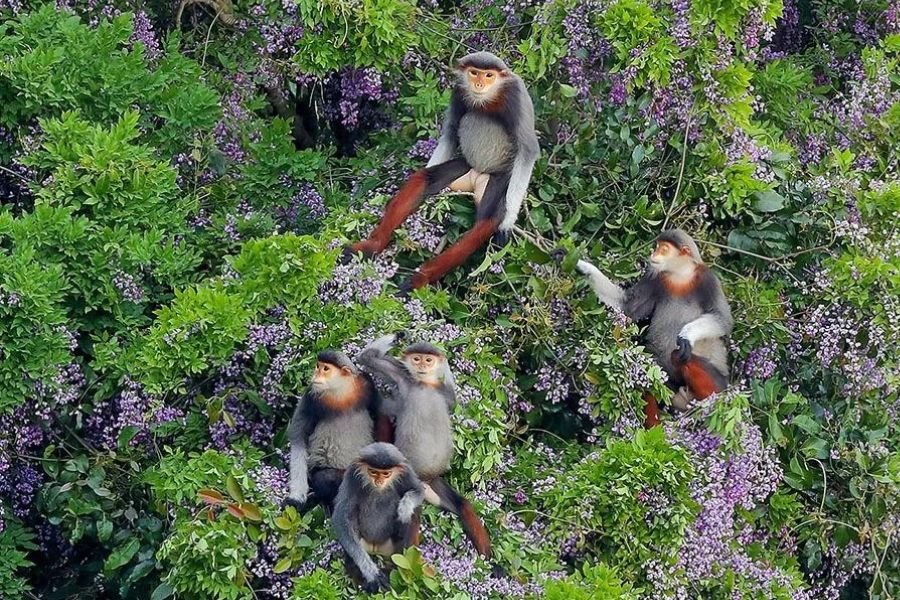
Image: Monaco Nature Encyclopedia
Red Shanked Douc Langur Conservation
Unfortunately, this cute monkey is critically endangered, present on the IUCN Red List (International Union for Conservation of Nature). Some of the causes responsible for these primates’ population decreasing by 50% in the last 30 years are the trafficking of animals for illegal pet trade, poaching, and loss of habitat due to deforestation for logging and agricultural exploitation. These animals are still hunted for food and used in traditional medicine in Vietnam which uses their bones to treat various diseases and ailments.
An interesting point to note is that the Vietnam War played a decisive role in the decimation of much of the red-shanked douc population. Their habitat was heavily bombed by the US with chemical defoliants. In an unbelievably cruel way, the soldiers, to improve their shooting skills, practiced target shooting on the little animals.
There are currently conservation laws for endangered rare animals in Laos, Cambodia, and Vietnam. Also, some organizations fight for the conservation of the species, such as the Douc Lnagur Foundation and the WWF.
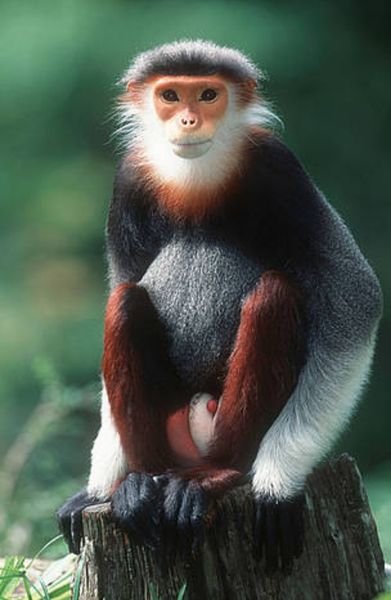
How can we help protect the grey shanked douc species?
There are several ways in which we can contribute to the conservation of the red-shanked douc langur species:
- Support organizations: You can support organizations such as the Red Shanked Douc Langur Foundation and WWF, which are actively working towards conservation efforts for the douc langurs in Southern Laos.
- Avoid buying products made from endangered species: Do not buy products that use parts of endangered animals and threatened species, such as bones or skin or even red shanked douc meat, to discourage the major threat of poaching and illegal animal trafficking.
- Spread awareness: Share information about the douc langurs and their conservation efforts with your friends, family, and community to raise awareness and promote action.
- Be a responsible traveler: If you are planning to visit areas where douc langurs live, make sure to choose eco-friendly tour operators that support sustainable tourism practices.
- Reduce, Reuse, Recycle: By reducing waste, reusing items, and recycling whenever possible, we can help reduce the demand for products that contribute to deforestation and habitat loss. This will indirectly protect the douc langurs by preserving their natural environment.
By taking these small actions, we can all contribute towards protecting the red-shanked douc langurs and ensuring their survival for future generations to come.
Conclusion
It is so rewarding to meet animals as beautiful as the shanked douc, but it is so sad to know that they have become rare only because of human greed. We here at Proto Animal repeat all the time: it is necessary to know to preserve. That is why we always try to bring interesting and relevant information about the animal world.
Did you like to know a little more about the most beautiful monkey in the world like the Grey Shanked Douc? Would you like to see an article about any other animal that you find curious? Leave it in the comments below and wait for us.
Till next time!♥

